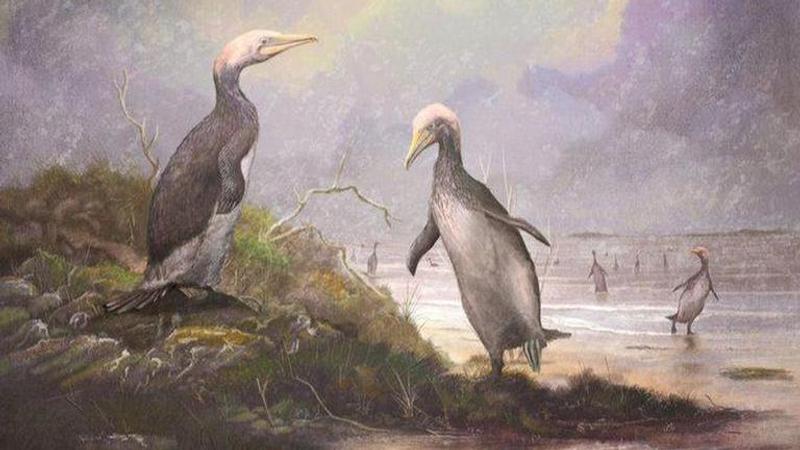Published 18:11 IST, July 17th 2020
Ancient monster penguins in New Zealand, as tall as humans, had doppelgangers in US?
A new study has found that 5 feet tall ancient monster penguins found in New Zealand had doppelgangers miles & million years apart in the US.

Studies have found that huge ‘monster penguins’, which are believed to have lived in New Zealand 62 million years ago, had doppelgangers. It has been found that those doppelgangers of the monster penguins roamed in the US. The scientific term for the doppelganger is plotopterids.
Monster Penguins' doppelganger found miles and million years apart
Paul Scofield, a Canterbury Museum curator in New Zealand, revealed more details about the same to a media portal. Paul told the media portal that plotopterids evolved in different hemispheres, millions of years apart. However, they must have looked so similar that from a distance it would have been very tough to tell them apart.
A media portal reported that plotopterids looked like penguins and swam like penguins. Reportedly, plotopterids probably even ate like penguins. However, they were not penguins.
Reportedly, remains of the earliest known penguins were found in Waipara, North Canterbury in modern-day New Zealand. The earliest known remains of penguins are believed to be 5-feet-tall. Scientists believe that these ancient penguins thrived in the tropical seas that once surrounded that location.
According to the new study, Plotopterids are reported to have lived at a later date of 37 to 34 million years ago. The ancient birds were so similar despite having lived miles away and millions of years apart. This intrigued the scientists to conduct research on both types of birds.
Image Credits: Associated Press
Image Credits: Associated Press
Reportedly, both the types of bird had long beaks with nostril slits. They are also reported to have had similar wings, chest, and shoulder bones. Vanessa De Pietri, another curator at Canterbury Museum told a media portal some interesting facts about the two birds.
She told the portal that the remarkable thing is that plotopterids and ancient penguins is that the two evolved independently but shared features. She further told the portal that it is an example of what scientists call convergent evolution. Convergent evolution is when distantly related organisms develop similar morphological traits under similar environmental conditions.
A media portal reported that although the plotopterids would have looked very similar to the giant penguins, a deeper analysis showed that they were actually more closely related to modern-day birds such as gannets and cormorants.
Read Also | 36 Alien Races May Be Hiding In Milky Way; Scientists Say Their Existence Defines Our Fate
Promo Image: Mark Witton Twitter handle (@MarkWitton)
Updated 18:12 IST, July 17th 2020





